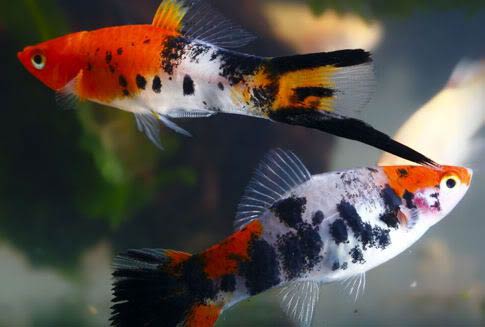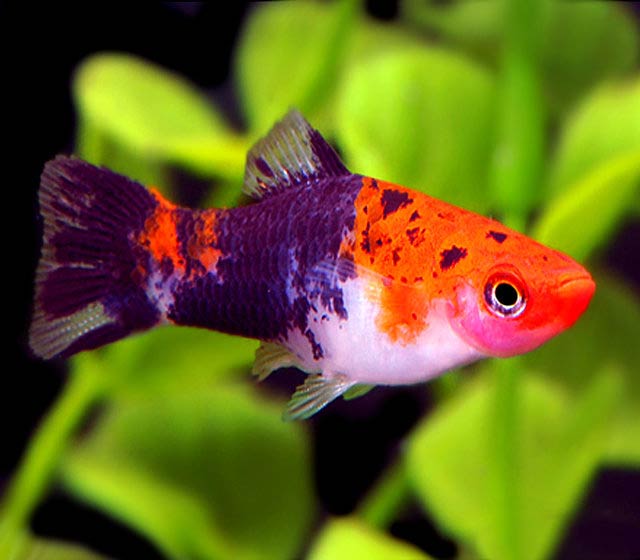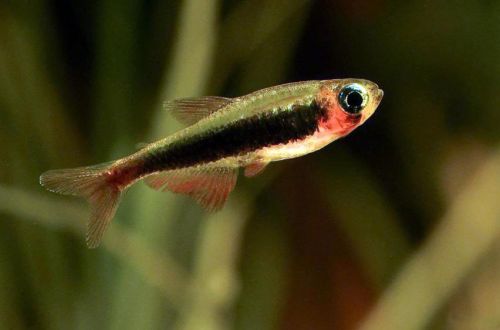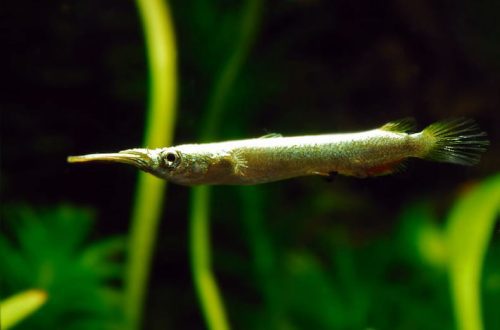
Swordsmen Who
Koi swordtails, scientific name Xiphophorus hellerii (Koi variant), belongs to the Poeciliidae family. A collective name for fish that have a unique body color similar to that of ornamental koi. The most popular strains of Kohaku (Kohaku), Sanke (Sanke) and Calico (Showa). The last two breeds are often confused due to their external similarity.

The base color of the body is a combination of white and red. Depending on the specific breed, black speckles may be present in the color.
You can distinguish a male from a female by the presence of elongated lower rays on the caudal fin, called the “sword”.
Brief information:
- The volume of the aquarium – from 100 liters.
- Temperature – 16-28°C
- Value pH — 7.0–8.0
- Water hardness – soft to high (10-30 dGH)
- Substrate type – any
- Lighting – moderate or bright
- Brackish water is permissible in a salt concentration of up to 15 g per 1 liter
- Water movement – light or moderate
- The size of the fish is 7–10 cm.
- Food – any food
- Temperament – peaceful
- Content alone, in pairs or in a group
Maintenance and care

They are rightfully considered one of the simplest and most unpretentious aquarium fish. Acceptable conditions can be created with a modest budget. For example, if you do not plan to purchase other types, then the minimum set of equipment will look like this: a tank of 100 liters for 3-4 fish, a regular lamp and a simple airlift filter. Swordtails perfectly adapt to relatively low temperatures up to 16 ° C, so a heater is not required.
The choice of design is also not significant and is selected at the discretion of the aquarist. However, it is welcome to have hiding places where weaker individuals could take refuge from excessive attention of relatives. Actual when keeping two or more males who compete with each other for the establishment of an internal hierarchy and the attention of a female.
Food. Due to their omnivorous nature, Koi Swordtails will gladly accept most of the foods popular in the aquarium hobby in dry, frozen and live form.





